Details
Description
SKU: BR.EB-9459
Composed by Helmut Lachenmann. Chamber music; stapled. Edition Breitkopf. Music post-1945. Sheet Music. Composed 1968. Duration 14'. Breitkopf and Haertel #EB 9459. Published by Breitkopf and Haertel (BR.EB-9459).ISBN 9790004189368. 10.5 x 14 inches.
TemA was written in the summer of 1968. In spite of Ligeti's Aventures it may be considered one of the first compositions in which the breathing plays a role as an accoustically transmitted energy process (Holliger, Globokar, Kagel, Schnebel and Stockhausen in Hymnen have already worked on this phenomenon independently of each other and from different points of view). Moreover, temA marks for me the first step into that musique concrete instrumentale in which the mechanical conditions of the sound production are incorporated into the composition. This characterizes my later pieces such as Kontrakadenz, Air, Pression etc. more consistently. In temA, unlike what happened in my previous works, the naturalistic extreme cases were consciously accepted but at the same time integrated into a very rigorous musical context which was also to give a new meaning to the traditional playing conceptions. The violation of the tabus felt in the nearly 70s (not only regarding this piece) lay to a less degree in the phenomenon of the sound deformation (snoring, pressed strings, soundless blowing etc.), since such an alienation was perfectly tolerated as an humoristic, dadaistic or expressionistic element. Rather the shock was caused by the technical logic of the movements which rendered relative the sheer surrealistic effect and had to be taken seriously instead of in an humoristic way.(Helmut Lachenmann, translation: Roger Clement)CD:Linda Hirst, Martin Fahlenbock, Lucas Fels CD Montaigne Auvidis MO 782023ensemble phorminxCD WER 6682 2Bibliography:Hiekel, Jorn Peter: Escaped from Paradise? Construction of Identity and Elements of Ritual in Vocal Works by Helmut Lachenmann and Giacinto Scelsi, in: Vocal Music and Contemporary Identities. Unlimited Voices in East Asia and the West (= Routledge Research in Music 3), hrsg. von Christian Utz und Frederick Lau, London und New York: Routledge 2013, pp. 158-174.ders.: Helmut Lachenmann und seine Zeit, Laaber: Laaber 2023, S. 202-213.Meyer-Kalkus, Reinhart: Klangmotorik und verkorpertes Horen in der Musik Helmut Lachenmanns, in: Der Atem des Wanderers. Der Komponist Helmut Lachenmann, hrsg. von Hans-Klaus Jungheinrich, Mainz: Schott 2006, pp. 91-110.ders.: Stimme und Atemsyntax in Vortragskunst, Prosa und Musik, in: Musik & Asthetik, Heft 51 (Juli 2009), pp. 73-106.Nonnenmann, Karl Rainer: Auftakt der instrumentalen musique concrete. Helmut Lachenmanns temA, in: MusikTexte 67/68 (1997), pp. 106-114.Saxer, Marion: Kunstgesang als Klangsymbol. Belcanto in experimenteller Vokalmusik nach 1960, in: Musik & Asthetik, Heft 92 (Oktober 2019), S. 5-25 Weber,Barbara Balba: ,,Es musste einfach schick sein, beim Musikhoren etwas zuriskieren. Weltbezuge bei Lachenmann: Perspektive der Musikvermittlung, in:Zuruck zur Gegenwart? Weltbezuge in neuer Musik, hrsg. von Jorn Peter Hiekel(Veroffentlichungen des Instituts fur Neue Musik und Musikerziehung Darmstadt55), Mainz: Schott 2015, pp. 160-169.
World premiere: Stuttgart, February 19, 1969.
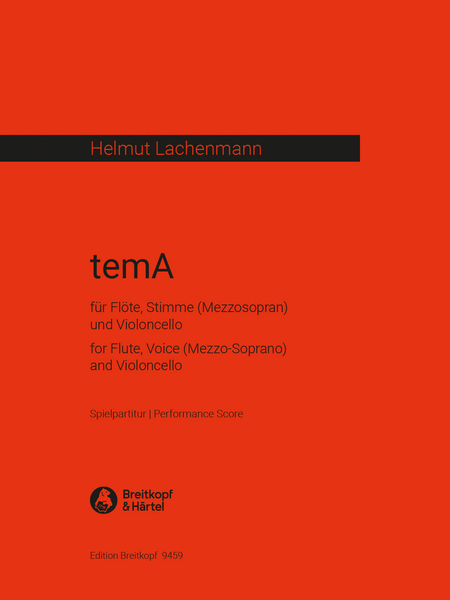
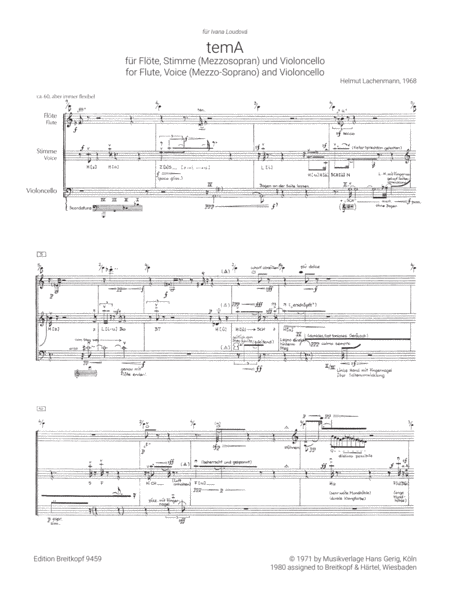
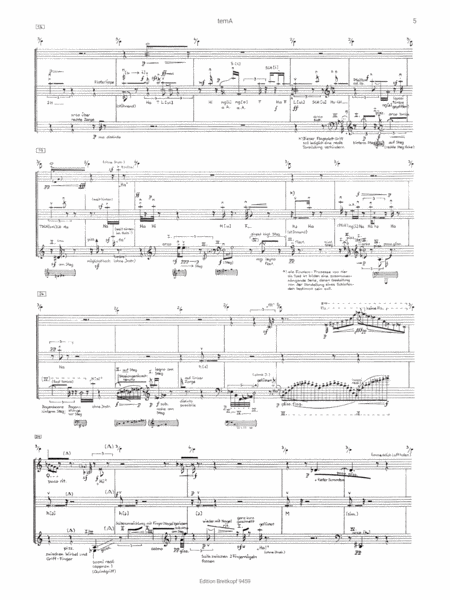
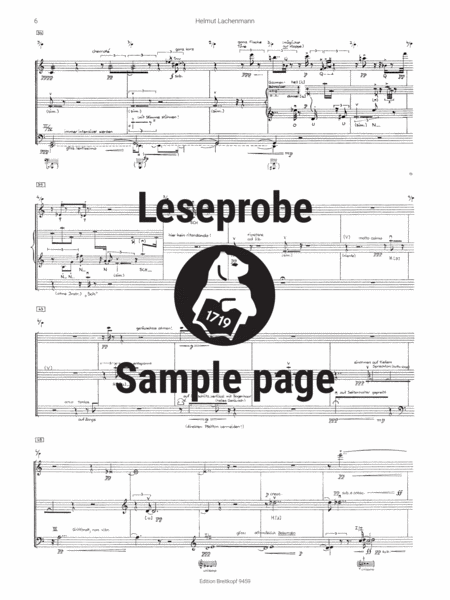
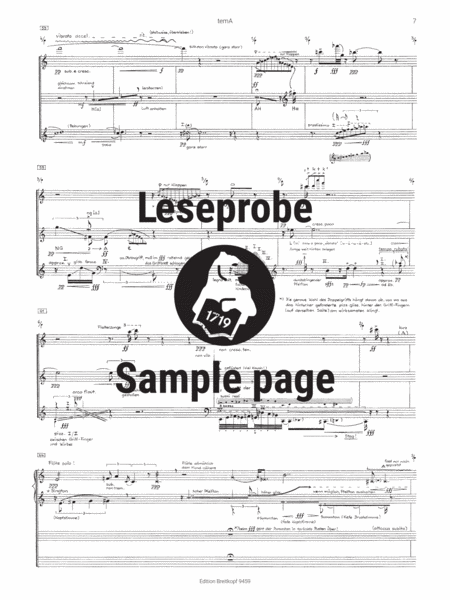
 Share
Share